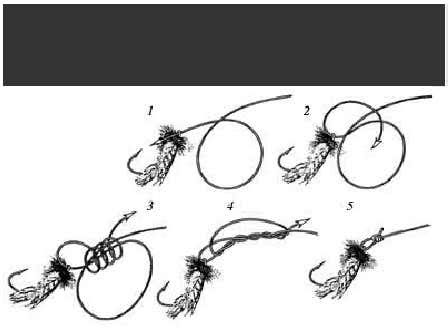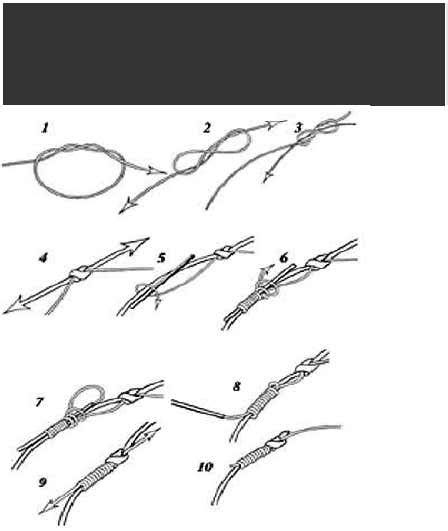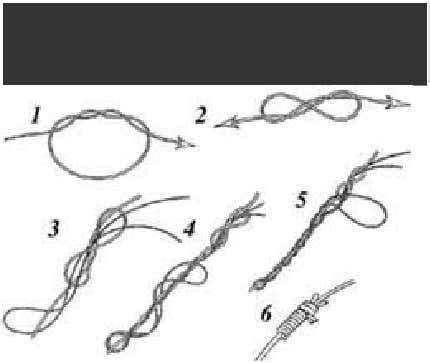Various Types of Knots and How to Tie a Fishing Hook
Selasa, 10 Januari 2023
Turle knot
This KNOT is suitable for tying fly fishing lines to ensure a neat tie. 1. Start tying by tying the fly bait with the fishing line at the base of the hook and wrap it several times. 2. Then insert the end of the rope into the eyelet hole towards the main fishing line. 3. Make a loop on the main rope and wrap around the edge of the loop. 4. Repeat the same winding on the coil. 5. Then knot the coil without pulling strongly. 6. Tie the end of the fishing line and tie off the hook hole
Lefty's Loop binding
This KNOT is suitable for kite fishing because it will facilitate the movement of the hook. It is easy to do and not easy to break or lose. This KNOT is suitable for kite fishing because it will facilitate the movement of the hook. It is easy to do and not easy to break or lose. 1. Insert the rope into the hole of the hook and make a coil on the leader and insert the end of the rope into the coil. 2. Wrap part of the leader between three to five wraps. 3. Pull the string from the top to streamline the tie and ensure the strength of the tie.
Duncan's Loop knot
Peter
Hayes, suggests the Duncan's Loop knot to make it easier to tie when kite fishing. SOMETIMES the same type of fishing line can be confusing, especially to differentiate while it is more complicated when it comes to kite fishing. Peter Hayes, suggests the Duncan's Loop knot to make it easier to tie when kite fishing. 1. Insert the main fishing line into the hole of the hook and make a coil. 2. Take the end of the fishing line and then put it in the coil and wrap it around the main line. 3. Repeat the circle up to four or five times. 4. Close the knot by taking the end and putting it in the coil. 5. Then trim the ties to the required size
Wind On Dacron Leader Knot
This KNOT is suitable for tying a thicker rope or connecting two ropes. The method: This KNOT is suitable for tying a thicker rope or connecting two ropes. The method: 1. Sharpen the front of the large fishing line but do not do it until it is too sharp. 2. Smooth the rough parts using sandpaper. 3. Insert the sharp part into the dacron duct.4. Trim the dacron channel so that it sticks well. 5. Then cut off the excess dacron. 6. Use a smoother sized fishing line and wrap it around the dacron tip. 7. Wrap it neatly and wrap it several times at the end of the dacron. 8. Knot the tie neatly so that it does not come off easily. 9. Tie the knot tightly and use suitable glue to cover the dacron
Shock Tippet Tie & Leader Knot
This KNOT is proven to be strong enough to connect two main mono fishing lines that have different thicknesses with a leader without being dissolved with a tube thread. This KNOT is proven to be strong enough to connect two main mono fishing lines that have different thicknesses with a leader without being dissolved with a tube thread.
1. Make a main loop with several turns in it.
2. Then form the rope loop into a figure 8.
3. Insert a fairly thick leader in the figure 8 loop in the middle of the circumference.
4. Tighten the two connections in the middle of the figure 8.
5. Insert the tube, wrap some around the middle to the top.
Related: Calculating Birth Wetons
6. Then pull and tighten the connection in the opposite direction to strengthen the bond.
7. Tidy up the wrap by tightening the wrap while inserting the mono or leader rope into the tube.
8. Pull out the tube that is under the circumference.
9. Overlap the two bonds neatly without pulling them too tight.
10. Finish the connection by cutting off the excess rope at the end of the section
Slim Beauty knot
This KNOT is usually used to connect the main mono fishing lines that have different thicknesses.
this is usually used to connect the main mono fishing lines that have different thicknesses.
1
. Make a main loop followed by an intermediate loop of thinner rope.
2
. Then form a rope loop into a figure 8.
3
. Insert a fairly thick leader in the figure 8 loop in the middle of the loop.
4
. Make four or more turns on the leader rope to be connected.
5
. Wrap the two mono strings to be connected.
6
. Then pull and tighten the connection in the opposite direction to strengthen the bond
Blood Knot
This KNOT is suitable for connecting two mono fishing lines that have different thicknesses.
1. Make an overlapping loop using the thinner rope and then wrap around the thicker rope.
2. Wrap the thicker rope with the thinner rope
3. Insert the thick end of the rope into the center of the wrap after making four to five wraps.
4. Repeat the winding up to six turns and insert the middle part using a thinner rope.
5. Finish the knot using a thicker rope by pulling two different parts.
6. Then gently pull the fish in different directions to strengthen the bond.
KnotOpposed Nail
This TIE is suitable for connecting two ropes of the same or different sizes.
1. The rope to be used needs to be marked between A and B. Make a coil like in the picture to start the bond while placing the tube in the middle of the knot.
2. Start winding for parts A and B through B, A and the tube up to 10 turns and then insert the end of rope A into the tube.
3.Pull the tube out and close the coil part of the rope gently but do not pull the tie.
4. Place the tube parallel to the part with rope A and connect rope B and start winding on the tube part of rope A and B.
5. Do up to 10 turns and release the tube from the middle of the bond. Close the tie gently.
6. Knot the wrap tightly and pull the two sides while smoothing the excess using a nail clipper
ReverseTwist BloodKnot
This KNOT is suitable for connecting two ropes and is able to carry a heavy load and is not easy to loose
1. Wrap two different types of fishing line.
Related: Prediction of a good day for fishing
2. Wrap up to four wraps and then make the same wrap in reverse.
3. Repeat to make up to four loops and embroider in the middle.
4. Repeat the same loop.
5. Embroider a tie in the middle and pull.
6. Pull both parts from different directions to smooth the bond.
source:abdur





